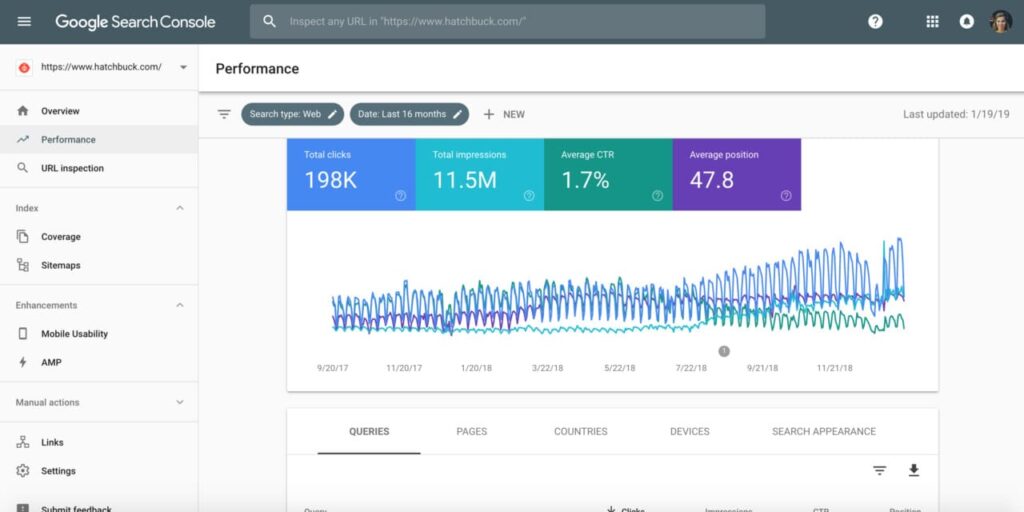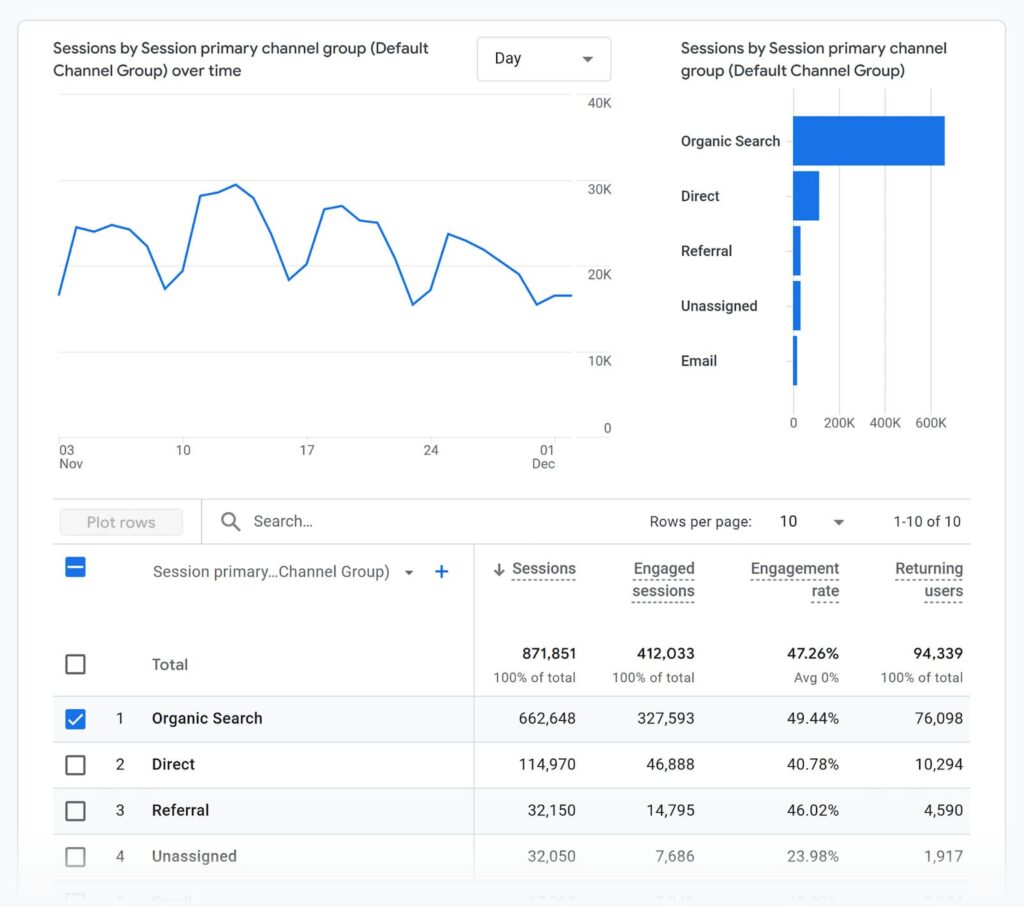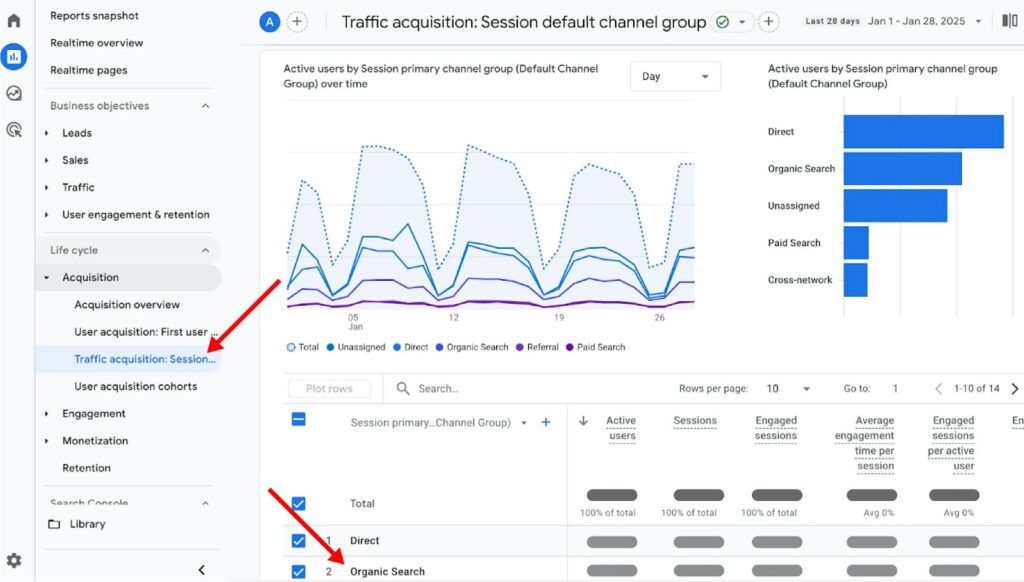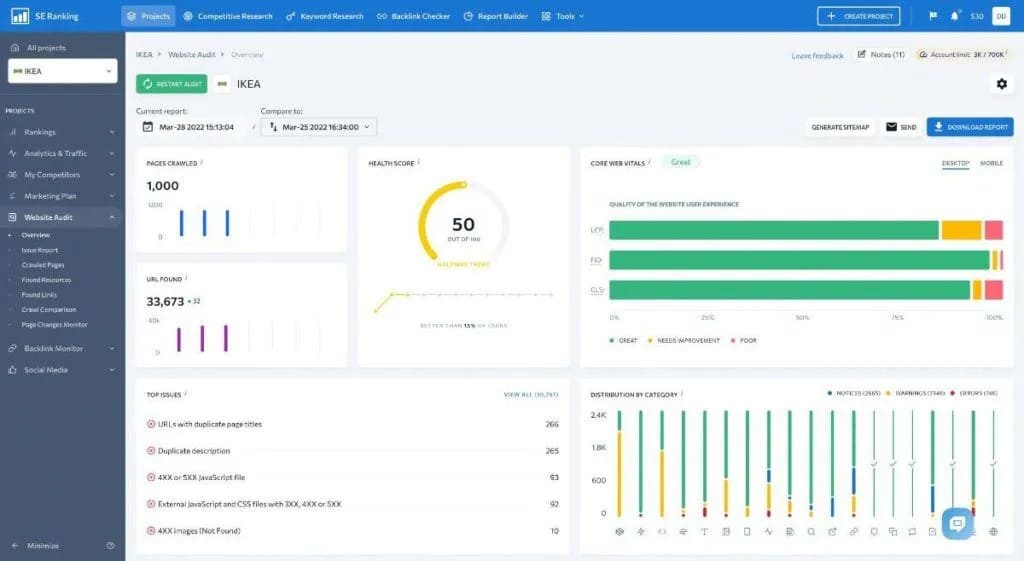SEO Maintenance: What It Is, Why It Matters, and How to Do It Right
Every type of business must be prepared to incorporate high-quality SEO services into its strategic plan. This is not just about support — it is an opportunity to ensure the long-term success of your brand in multiple ways: climbing to the top of search results, attracting quality traffic, and significantly boosting online sales. To achieve all of your business goals, it is essential to understand which elements must be included in a comprehensive SEO maintenance checklist to move forward effectively in the digital space.

What Is SEO Maintenance?
Today, SEO maintenance is, above all, about building a strong online presence for your brand. It includes developing a tailored strategy, integrating professional SEO services into the business project, and much more. To optimize all processes, it is crucial to set clear goals and assign well-defined SEO tasks. Once optimization work is carried out at a high level, your brand or company will begin to reap the rewards with outstanding SEO results. Put simply, SEO support is not only about achieving top positions in organic search results — it is a powerful way to build a base of potential customers, expand the target audience, and drive significant growth in online sales.
Why Ongoing SEO Maintenance Is Important
By creating a highly precise maintenance plan, modern businesses can expect their web platforms to thrive in the online environment. In fact, with proper website maintenance, a brand can enjoy impressive online results, attract fresh traffic, generate more qualified leads, and achieve excellent conversion rates. Moreover, consistent SEO maintenance positively impacts other critical performance indicators — including ranking, indexing, page load speed, mobile responsiveness, and more. Additionally, your business website will not be penalized or blocked by Google’s search algorithm or any other online system, as it will fully comply with ethical and transparent SEO practices, often referred to as “white-hat” methods.

Rankings Don’t Last Forever
Due to the ever-changing nature of search engine algorithms and the resulting volatility of search results, it is completely normal for a business website to appear on the first page one moment and drop out of the top 10 a few hours or days later. With consistent SEO maintenance, however, there’s a real opportunity to retain strong and impressive search engine rankings for your brand’s website.
Search Engine Algorithms Constantly Evolve
Since search algorithms are frequently updated, adjusted, and refined, these changes directly affect the visibility of a business online. If the brand’s website is not continuously optimized to align with new trends in technical SEO, off-page strategies, on-page SEO enhancements, and high-quality local SEO, you risk losing valuable traffic and, ultimately, your hard-earned rankings in the search engine results.
Competitors Keep Optimizing
Gone are the days when competitors remained static in the digital space. Today, they are constantly working on improving their websites — and that’s the norm. To stay ahead, your brand must not only implement local SEO, off-page, and on-page SEO strategies but also invest in ongoing technical SEO and holistic support for the website overall.

SEO Is Not a One-Time Task
Modern businesses must understand that SEO support is the bare minimum. At best, SEO should be woven into your strategic plan with a broad range of tools — from keyword research and local, internal, and external optimization to technical SEO, Google Search Console, and other advanced web technologies. Only through a comprehensive approach — incorporating audits, performance analysis, monitoring, and thorough SEO checks can your brand’s website achieve consistent growth and truly effective search engine results.
Enhances User Experience
Thorough technical and content-focused search engine optimization (SEO) inherently improves user experience, making your business website easier and more pleasant to navigate. For example, by tracking keyword rankings, you can select keywords that help reach your goals more efficiently. This starts with in-depth keyword research. Well-chosen phrases and keyword rankings have a direct impact on user engagement and conversion rates. Tools like Google Search Console play a crucial role in helping you select the right keywords.

Helps Identify and Fix Website Issues
Another key aspect of SEO maintenance is conducting a high-quality, professional website audit. This audit should not only be timely but also executed with precision. It allows you to identify shortcomings, errors, technical issues, and other obstacles that may hinder your website’s marketing success. Promptly addressing and fixing these problems is essential for maintaining your website’s ranking and ensuring a positive user experience.
How Much SEO Maintenance Do You Need?
The level of SEO maintenance required for each business depends entirely on the size of the brand’s website and the competitive environment in which the company operates, whether that be the industry, niche, or specific business focus. Naturally, this question demands thoughtful consideration, in-depth research, and careful analysis, as there is no one-size-fits-all answer. The truth is, smaller business websites may only need a few hours of monthly maintenance, focusing on targeted updates and minor efforts to optimize certain elements. Larger sites often require comprehensive optimization — everything from managing complex functionality to executing tasks at a high frequency must be optimized to maintain strong performance.
SEO at Launch vs. Ongoing Maintenance
To ensure a brand’s website achieves real success in the online space, it is essential not only to implement a strong SEO strategy at launch but also to maintain it consistently once the website goes live. The initial setup is merely the starting point — a foundation from which all future efforts must evolve. Ongoing SEO maintenance is necessary to preserve and continually improve search engine positions. Without it, early gains can quickly be lost, and long-term growth will be compromised.

SEO Setup for New Websites
When a brand takes the step of launching a new website, it immediately needs to establish a well-structured SEO framework to make it easier to optimize the site in the future. This involves conducting comprehensive keyword research, setting up an effective internal linking strategy, ensuring mobile responsiveness, and optimizing metadata such as tags and descriptions. With this level of professional SEO setup, the website is positioned on a solid foundation, ready to grow, attract organic traffic, and convert qualified leads.
What Basic Ongoing Maintenance Includes
When it comes to ongoing maintenance, most businesses need to implement a set of essential steps that not only help keep their website afloat but also contribute to its long-term growth and success. Regardless of the industry, it’s necessary to carry out services such as regular audits (to properly optimize the brand’s website), implement updates, make adjustments, and publish fresh, high-quality content. Additionally, it’s important to track website rankings, perform technical adaptations, and continuously analyze competitors within the same niche. These ongoing efforts ensure consistent support and work toward improving the business website’s search visibility over time.
How to Maintain and Improve SEO: A Practical Checklist
There are many effective ways to keep a website performing at its peak and ranking in the top 10 search engine results for user queries. However, all of these strategies must strictly fall under “white-hat” SEO practices and involve professional efforts to optimize the site sustainably and ethically, ensuring strong, lasting results. In any case, navigating all the necessary steps becomes much easier with a professional SEO maintenance checklist.
1. Track Key SEO Metrics Regularly
Brands and companies need to begin by analyzing a variety of key metrics. These include organic traffic, keyword and phrase positions, as well as user behavior indicators. These critical metrics enable businesses to clearly understand which white-hat SEO practices are delivering results, which optimization actions should be discontinued, and which SEO tactics still require updates or refinement within the strategy. Consistent tracking ensures informed decision-making and sustainable online performance.

2. Monitor and Fix Technical Issues (Speed, Errors, Redirects, etc.)
Even well-functioning websites can encounter technical glitches and inefficiencies. Common issues include slow page loading speeds, broken links, faulty redirects, and other performance-related problems. If left unresolved, these issues can significantly undermine the impact of your already implemented SEO efforts. To prevent this, brands should carry out regular technical audits, resolve existing bugs promptly, and maintain stable and reliable website performance across all devices and platforms.

3. Refresh and Optimize Existing Content
It is crucial to periodically update your website with high-quality, relevant, well-crafted, and useful content. Doing so helps your brand remain competitive in search results. Every piece of content — be it an article, blog post, product description, or landing page — must be informative, engaging, and 100% unique. Furthermore, companies should consider improving the structure of existing content and integrating new keywords where appropriate, using tools like Google Search Console to identify relevant terms. These efforts are vital for preserving the visibility and competitiveness of your site in Google Search.
4. Maintain Accurate Local Listings
Businesses must ensure that their brand name and contact details, such as address, phone number, and email, are accurate and consistent across all platforms and directories. Properly completed listings, particularly on platforms like Google My Business, significantly enhance local SEO visibility. This increases your chances of appearing on online maps, including Google Maps, and showing up in the local results of the search. For any business, this is a powerful opportunity to boost relevance, brand recognition, and overall popularity within their geographic area.
5. Stay Informed on SEO Trends and Updates
Given that search engine algorithms and optimization practices are constantly evolving, businesses must stay updated and adapt to these changes. Brands must monitor industry news, stay informed about emerging technologies, and incorporate modern tools such as machine learning, artificial intelligence, and blockchain into their digital strategies. Staying ahead of SEO trends allows companies to keep their strategies current and ensures they remain competitive, especially in industries where rivals are equally eager to lead the market.
Final Thoughts: Keep SEO Maintenance a Priority
Ongoing SEO can truly be considered the “secret weapon” for promoting any type of business. The reason is simple — through consistent optimization efforts, the application of new trends, and adapting to ever-evolving search engine algorithms, it’s possible to significantly boost a website’s ranking. Moreover, continuous SEO work, combined with a well-structured strategic plan, helps businesses outpace competitors in the modern marketplace, making the brand highly visible and in demand within its industry and among potential customers. Regular monitoring, timely analysis also play a crucial role — they allow you to identify and eliminate errors before they escalate, ensuring you don’t lose your competitive edge. These efforts help your business maintain a strong presence, support long-term growth, and maximize the return on all digital marketing investments.
FAQ
How to maintain SEO?
To support any current optimization efforts, it is very important for businesses to periodically implement various tactical measures, ranging from updating the content published on the website and monitoring the website’s positions in the top 10 search results, to conducting technical audits and performing other SEO activities. Additionally, it is essential to monitor external backlinks and adapt all strategies to changes in the algorithms used by online search engines.
What is maintenance on a website?
When it comes to maintenance, brands should first and foremost remember that updating software is an extremely important task, as is fixing malfunctions, errors, and issues. It is also vital to allocate time for creating backups of informational data and ensuring security. These actions are necessary to ensure the smooth, stable, and uninterrupted functioning of the business’s website.
How much does it cost to maintain SEO?
The pricing policy for professional SEO maintenance depends on many important factors, such as the scope and complexity of work, the level of competition faced by the brand in the market, as well as the established business objectives and goals. It is worth emphasizing that, more often than not, prices for digital marketing services are reasonable, advantageous, and affordable; however, everything is individual. Some businesses require a comprehensive approach, while others may suffice with organizing and utilizing just a few services. Nevertheless, comprehensive support for any business project is generally recommended to achieve the best possible results.





